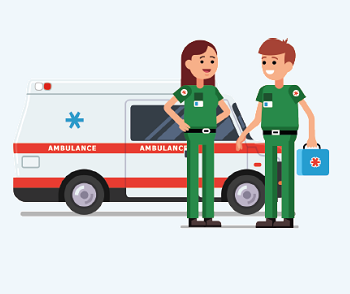A Day in the Life of Paramedics
Our school magazine reporter Judy Robinson is reporting from the University of Brighton. She’s doing interviews with paramedic students, Darlene and Ethan.
Judy: Here in the UK people like Darlene and Ethan are saving lives every hour of every day. The Ambulance Service receives thousands of emergency calls. It is part of the National Health Service, which provides free health care, paid for out of taxation. When someone’s reported a serious accident or emergency, ambulance crews get there as fast as they can. Their speed and medical education make the difference between life and death.
Judy: What sort of person makes a good paramedic?
Darlene: I think someone that can communicate well, who works well in a team has leadership skills.
Judy: How long do you have to study for?
Darlene: Most study for three years to pass the required exams.
Judy: What sort of emergencies do you prepare for?
Darlene: Well, we could go to a huge range of emergencies: asthma, chest pain, people who’ve had injuries, trauma like in road traffic accidents.
Ethan: After passing their exams, the students can work in an ambulance. It is packed with the latest technology to help save lives.
Judy: Being a paramedic – is it the toughest job in the world?
Ethan: It can be very challenging. You know, we’re answering 8 to 12 calls a day, so that can be particularly stressful, very tiring, but trauma jobs are very challenging. There’s a lot going on- it’s a time-critical job. You’ve got to be on-scene for a very limited amount of time and get them to the trauma unit or hospital as fast as you can. It’s hard work but very rewarding.

